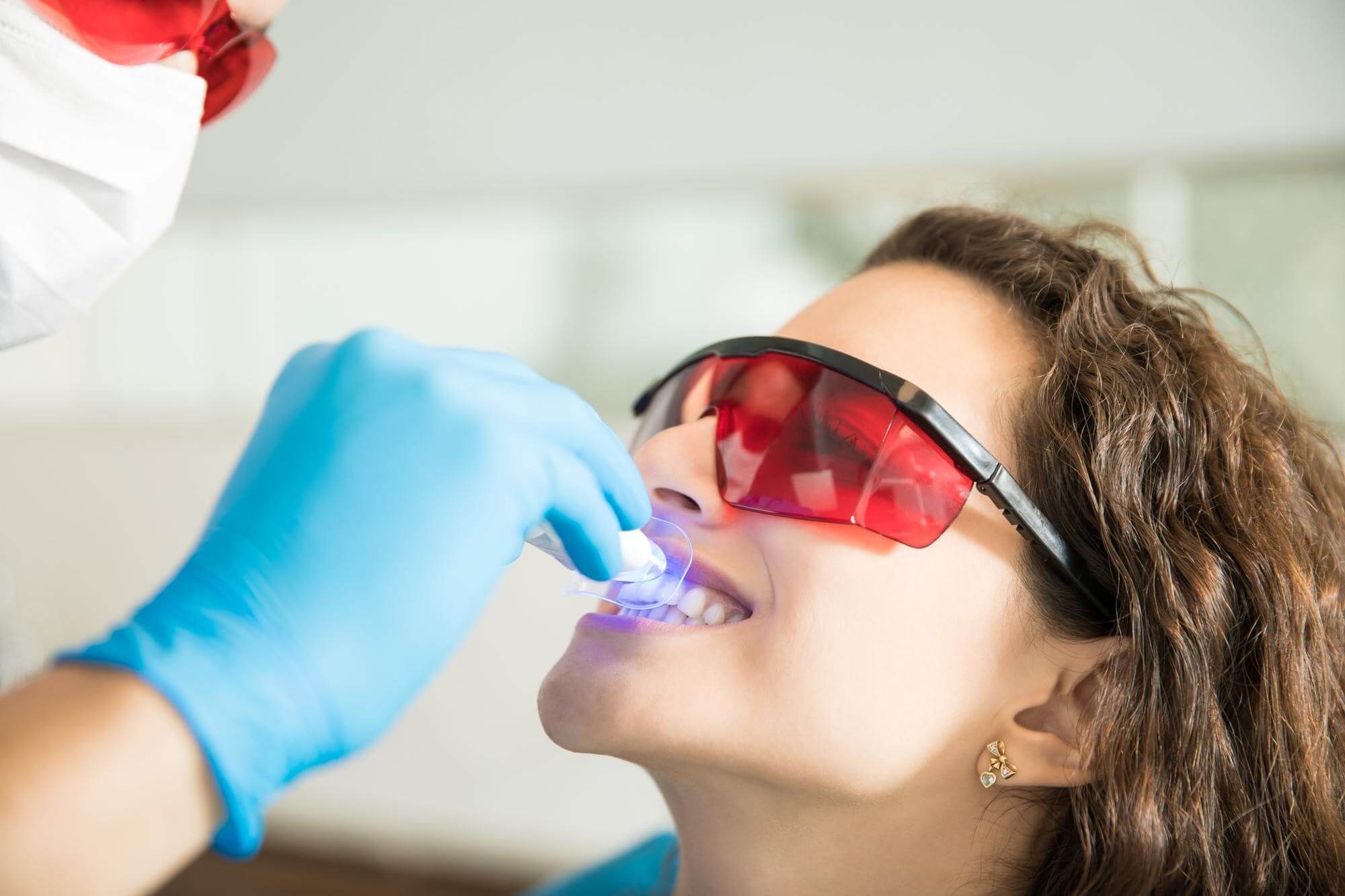Many people explore different methods to whiten their teeth. Teeth whitening (bleaching) is typically performed for aesthetic reasons, but determining which method is more effective can be challenging. There are some key differences between at-home teeth whitening procedures and professional bleaching done in a clinical setting. So, what are these differences?
What is Teeth Whitening?
Teeth whitening is a procedure aimed at lightening the colour of your teeth. The goal is to remove stains or discoloration from the teeth. Over time, teeth can yellow or become stained due to various factors. Habits like smoking, and consuming coffee, tea, or wine can negatively affect the colour of your teeth.
Whitening is typically done using special solutions or gels containing peroxide. These substances are applied to the surface of the teeth, making them appear whiter.
Teeth Whitening Methods
Bleaching methods can be grouped into two main categories: at-home and in-clinic. Both have their advantages and disadvantages.
At-Home Teeth Whitening
At-home teeth whitening allows you to whiten your teeth on your own. While this method is generally more affordable, achieving the desired results may take longer. Common at-home whitening products include:
- Whitening Toothpastes: These can be used as part of your daily dental care routine but generally provide milder whitening effects.
- Whitening Gels and Strips: These products are applied to the teeth and typically used for several weeks. They offer more noticeable results.
- Whitening Kits: Kits purchased from a dentist or online can whiten teeth but may cause damage to the teeth and gums if used incorrectly.
In-Clinic Teeth Whitening
Professional teeth whitening in a clinical setting is performed by experienced dentists. This method uses stronger whitening agents, offering faster and more effective results. Some of the common in-clinic whitening methods include:
- Laser Whitening: Laser light is combined with a whitening gel to quickly lighten the colour of the teeth. This procedure usually takes 30-60 minutes.
- Zoom Whitening: This method uses a special light source to enhance the effectiveness of the whitening agent, delivering faster results.
- Chemical Whitening: Strong whitening agents applied to the teeth can achieve more dramatic results.
In-clinic whitening generally produces faster results. Additionally, the use of professional equipment and expertise makes the procedure safer, though it is often more expensive than at-home options.
Differences Between At-Home Whitening and In-Clinic Bleaching
Here are the key differences between at-home whitening and in-clinic bleaching:
- Time and Duration of Effect: At-home whitening typically takes longer to show results, while in-clinic procedures are much quicker, often completed in about an hour.
- Effectiveness: In-clinic whitening uses stronger agents, resulting in more noticeable and faster outcomes. At-home whitening tends to offer milder results and requires longer use.
- Cost: At-home whitening products, like toothpaste and strips, are generally more affordable. In-clinic whitening is more expensive due to the use of professional equipment and expertise.
- Safety: In-clinic whitening is performed by professional dentists, reducing the risk of damage to the teeth and gums. Improper use of at-home bleaching products can cause harm.
Choosing the Right Whitening Method
The best bleaching method depends on your personal preferences and needs. At-home whitening is more budget-friendly and flexible. However, for faster and more effective results, in-clinic whitening may be the better option. Both methods have their benefits and limitations.
At-home whitening may be suitable for mild staining and discoloration, while in-clinic whitening is recommended for more significant and long-lasting results. Additionally, professional supervision makes in-clinic whitening a safer option.
Don't forget to consult your dentist to learn more about teeth whitening or to begin treatment.
